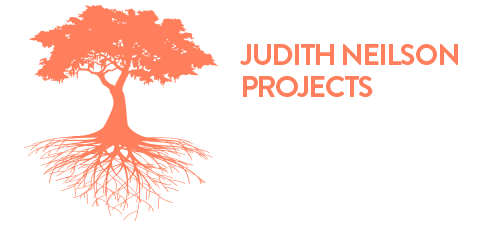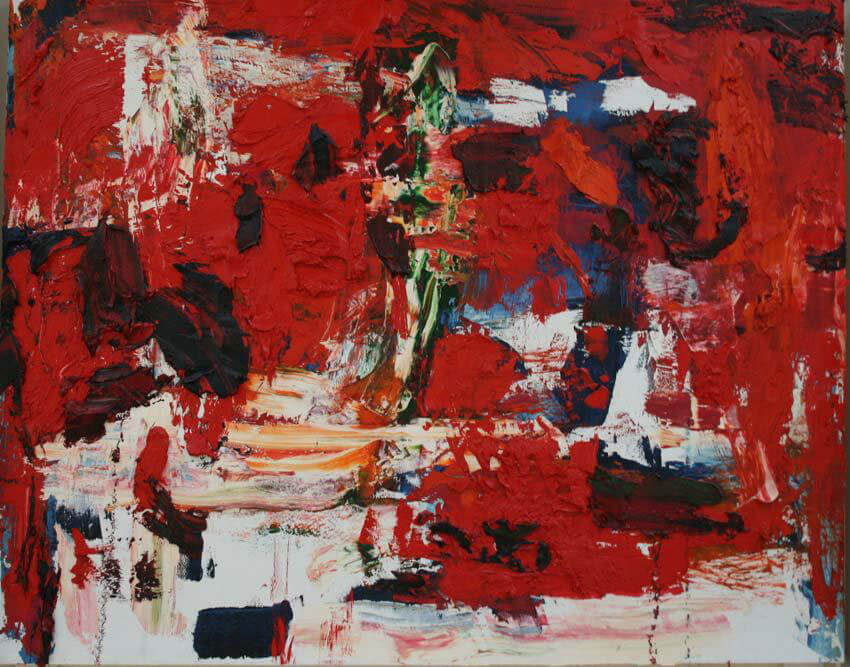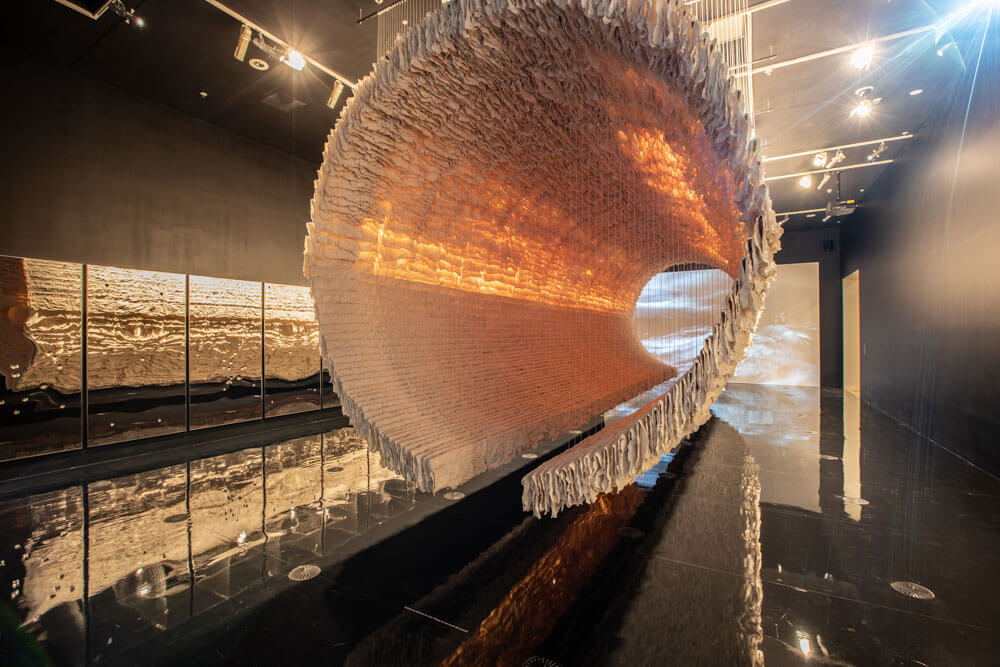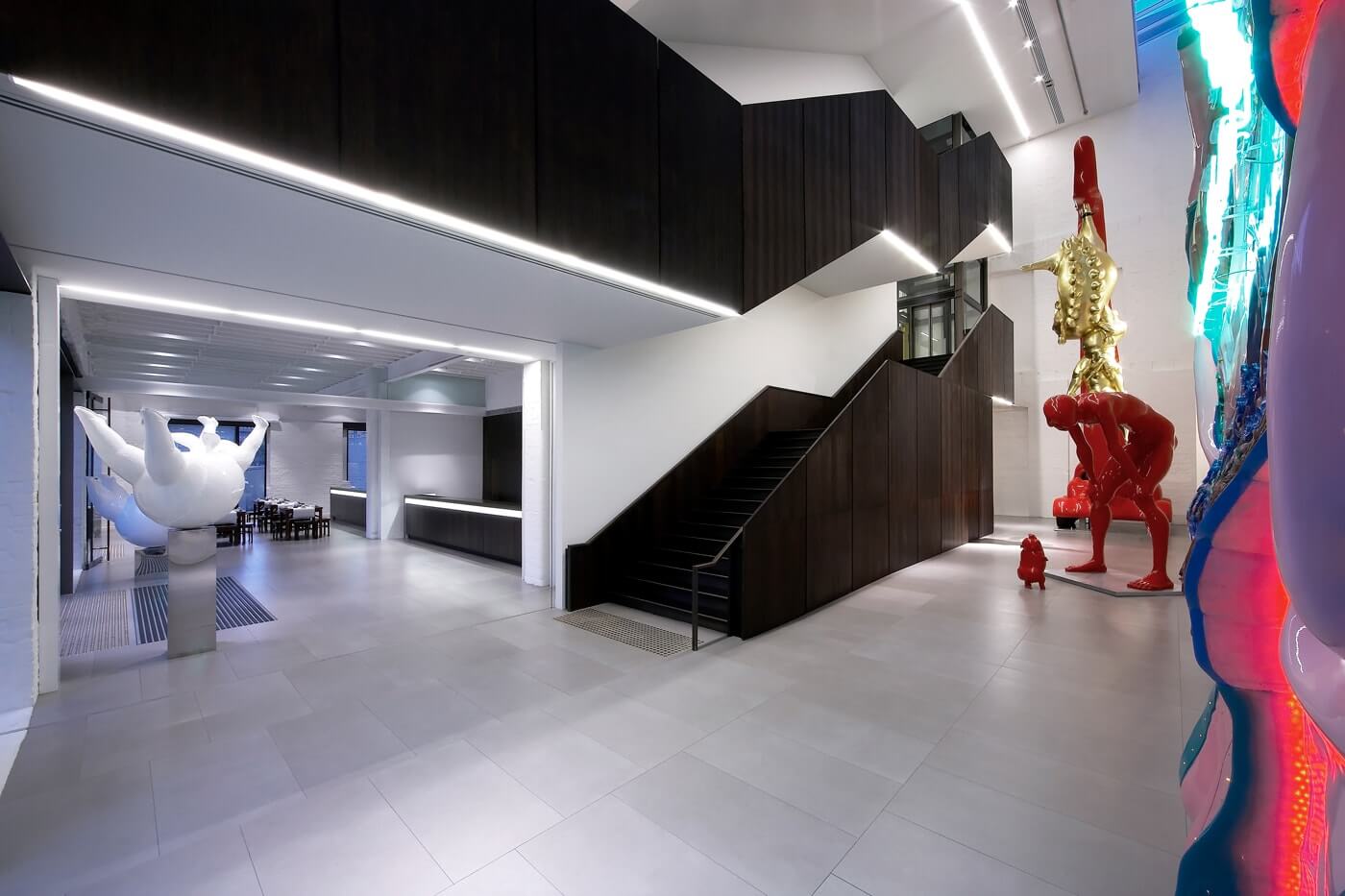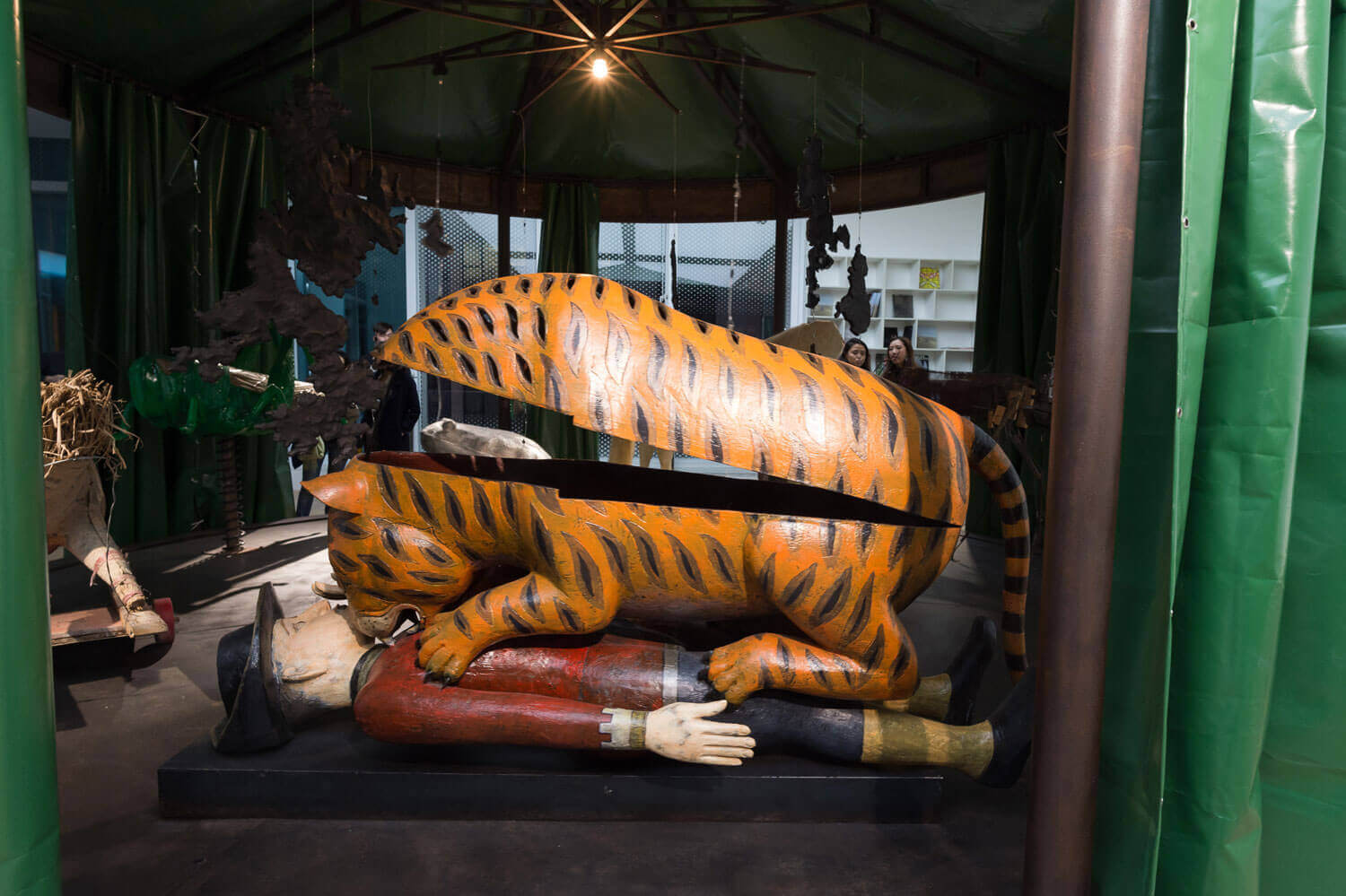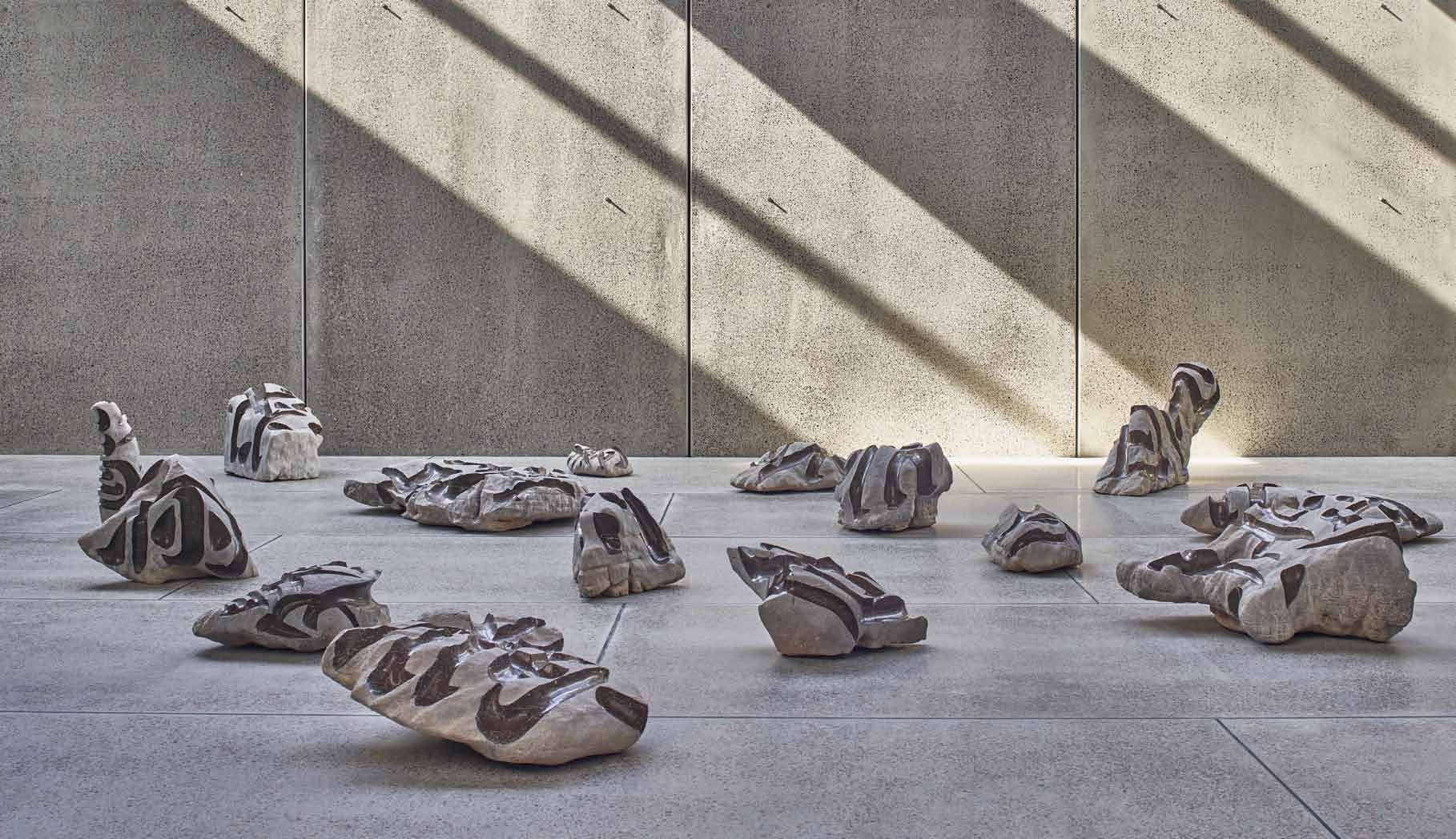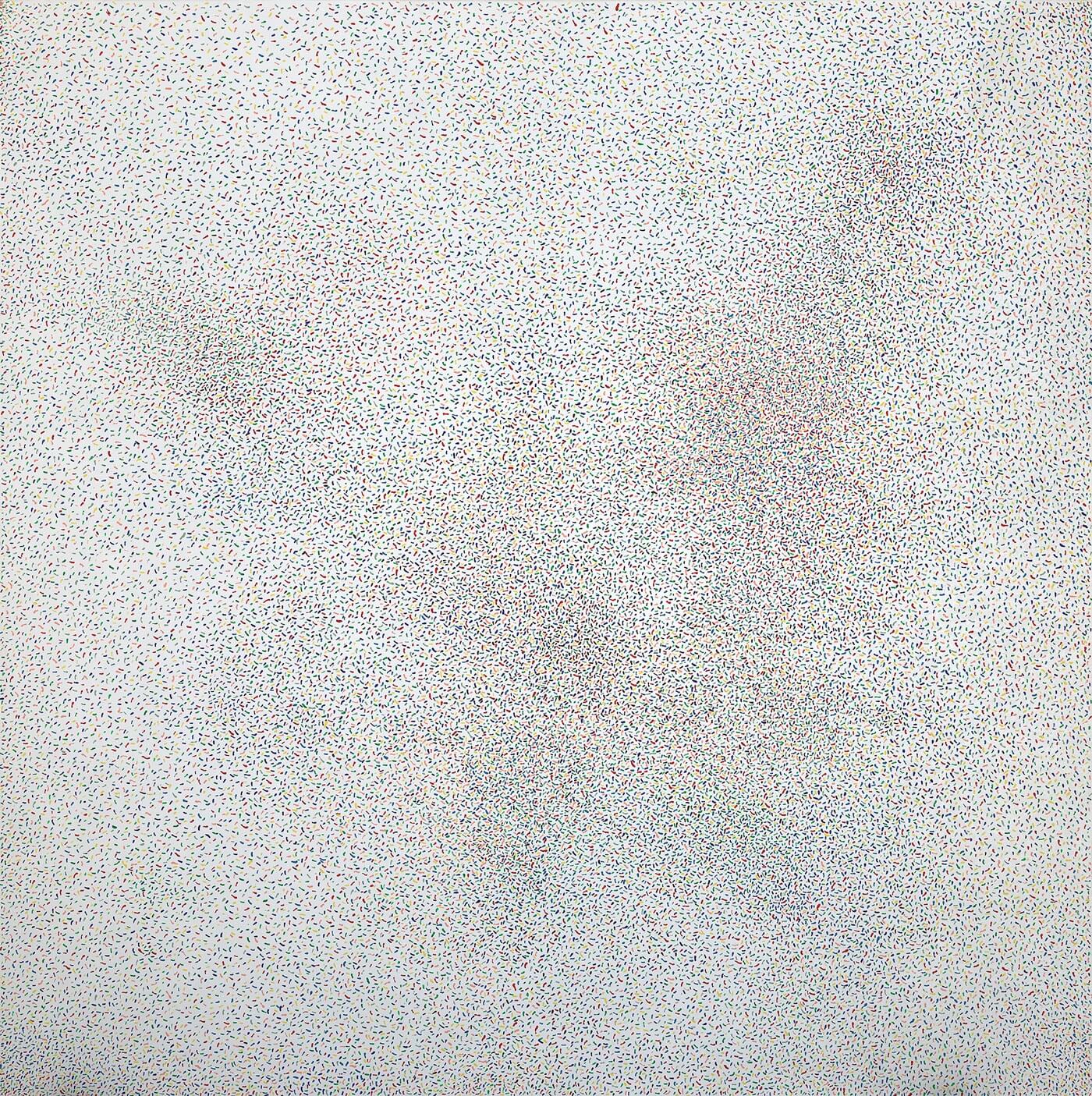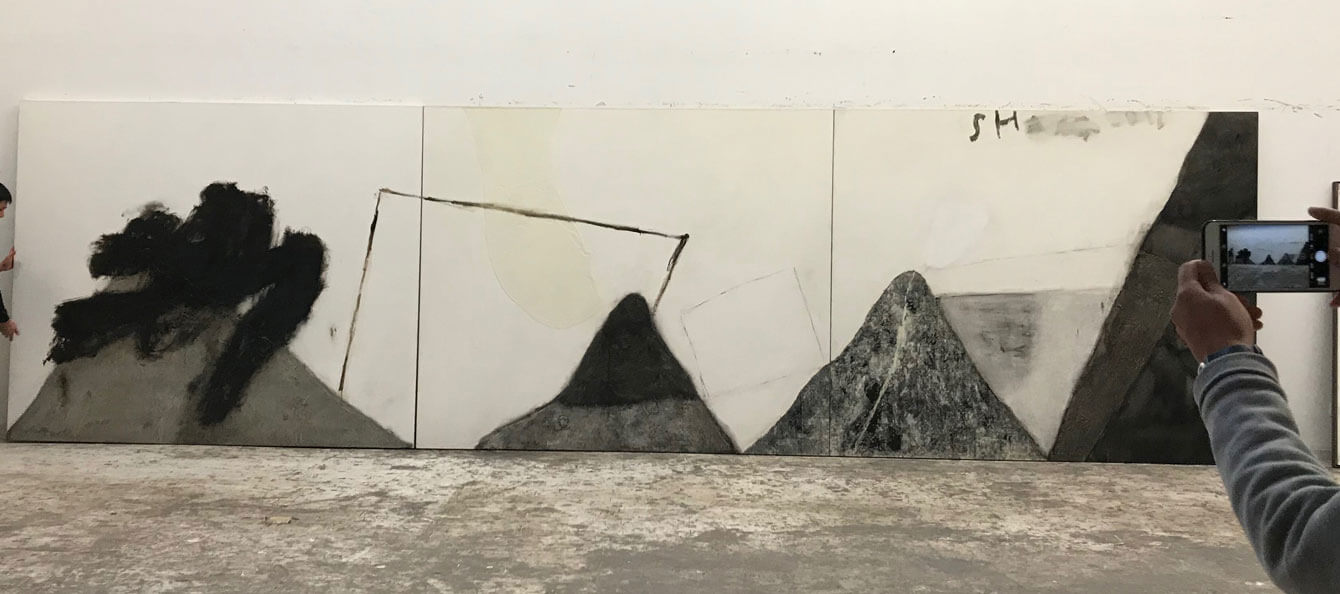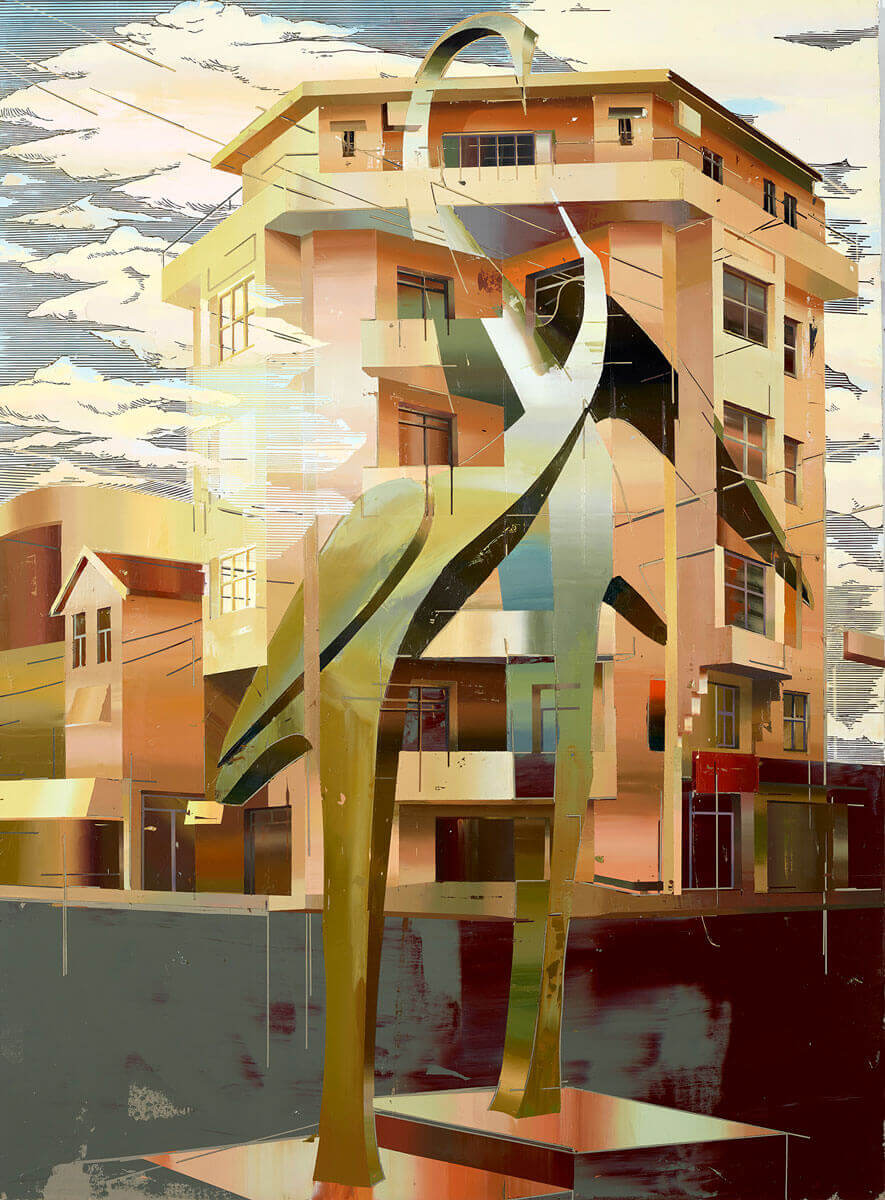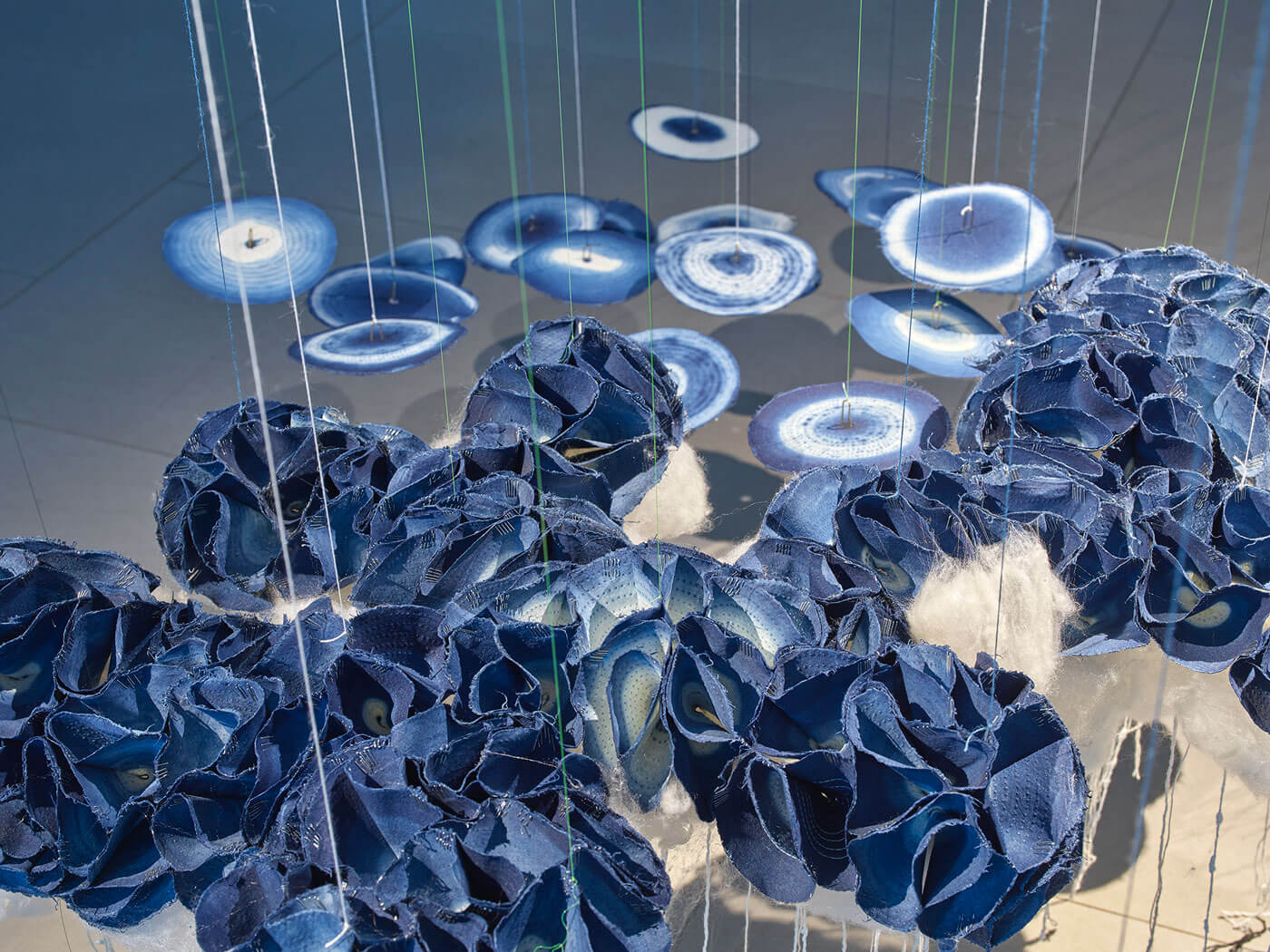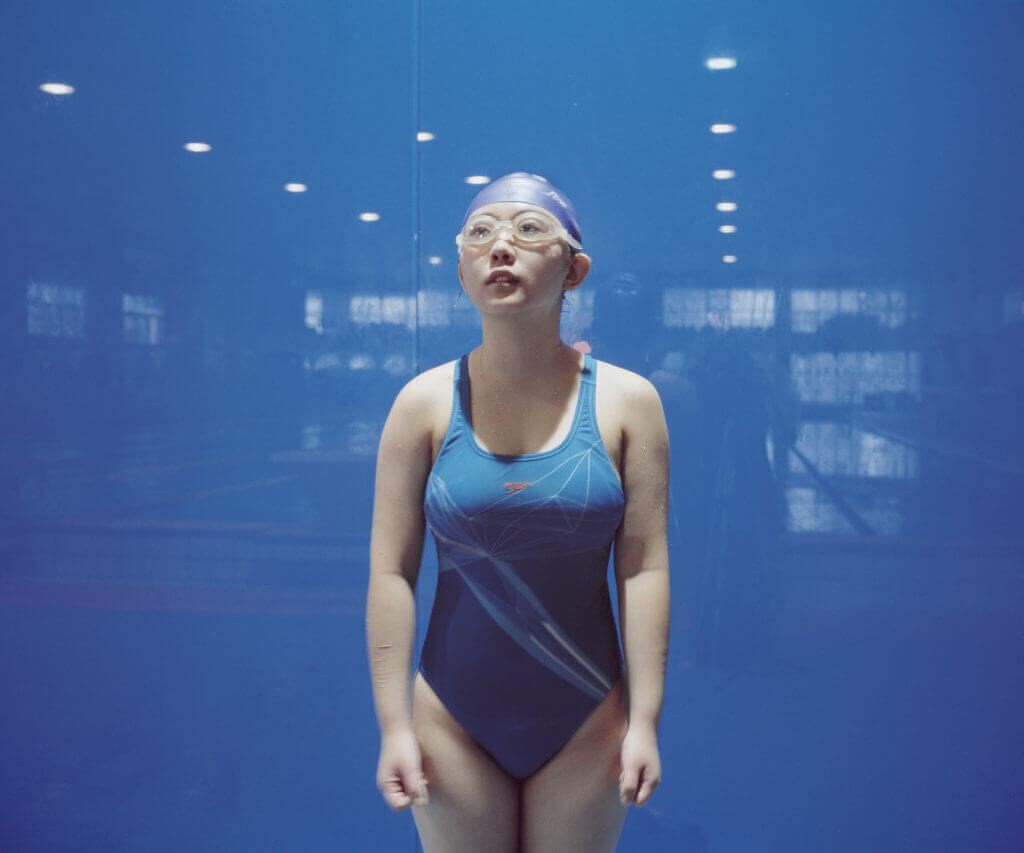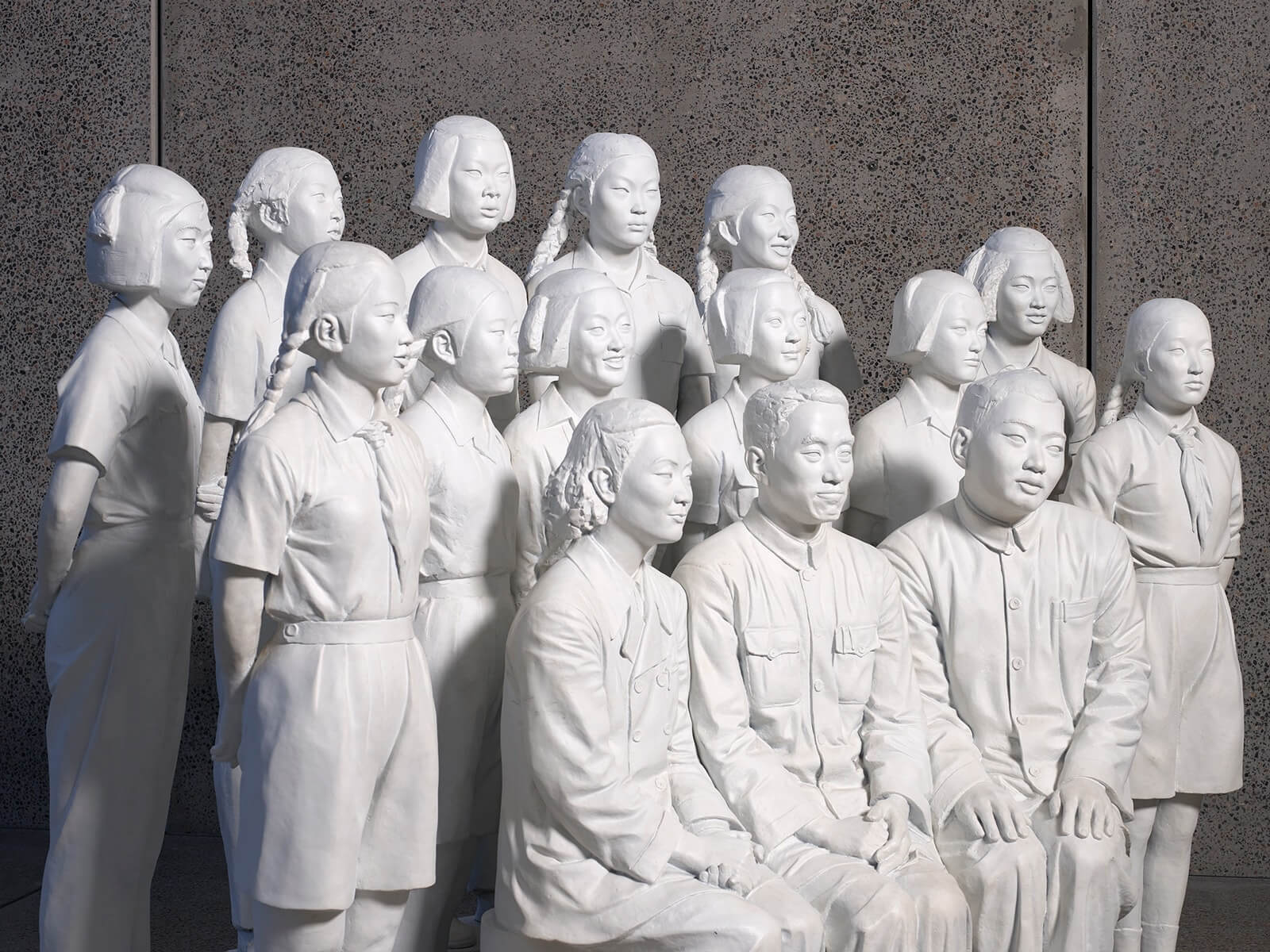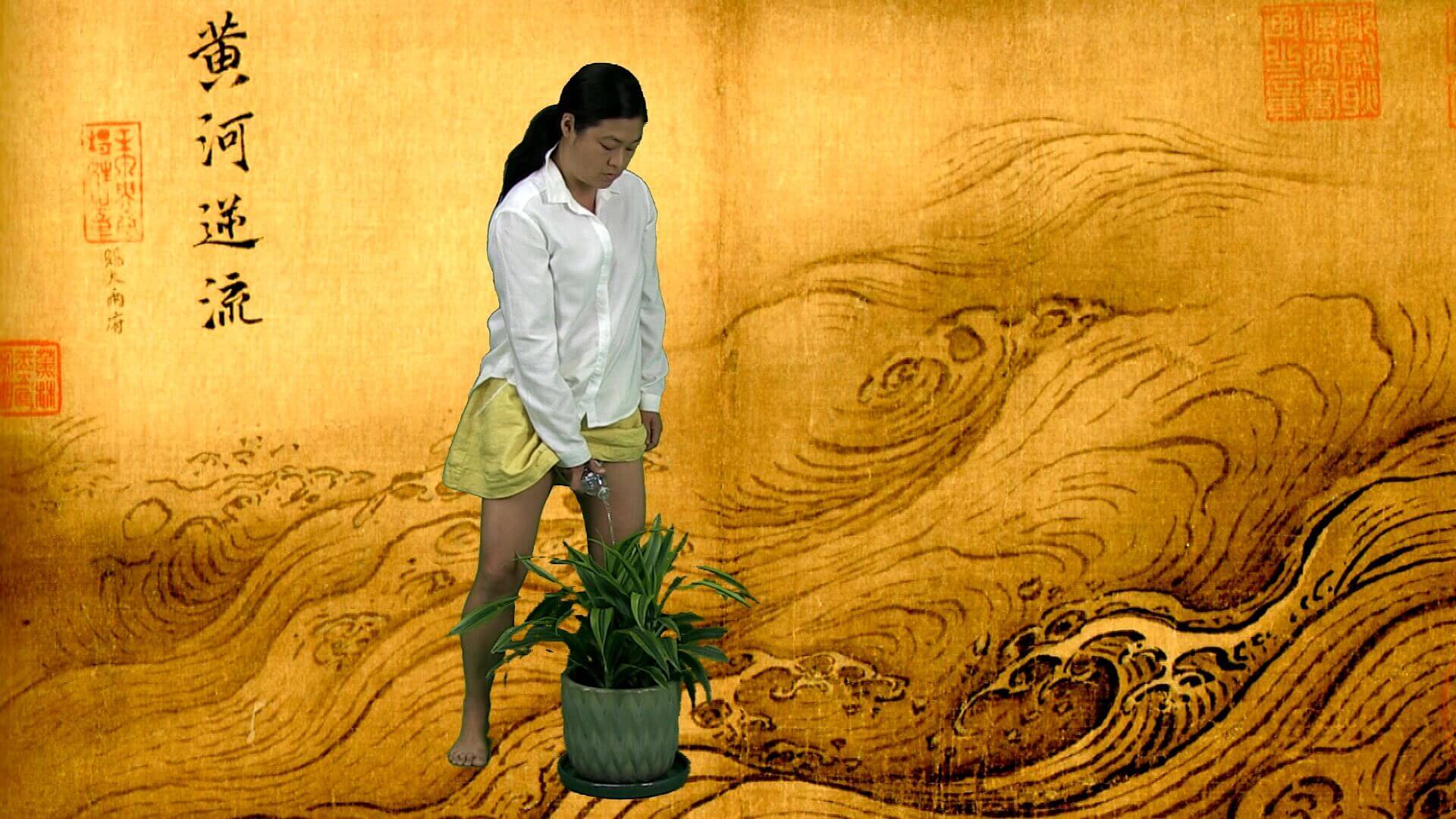Have Fun!
ARTISTS & WORKS /
Zhu Jinshi 朱金石
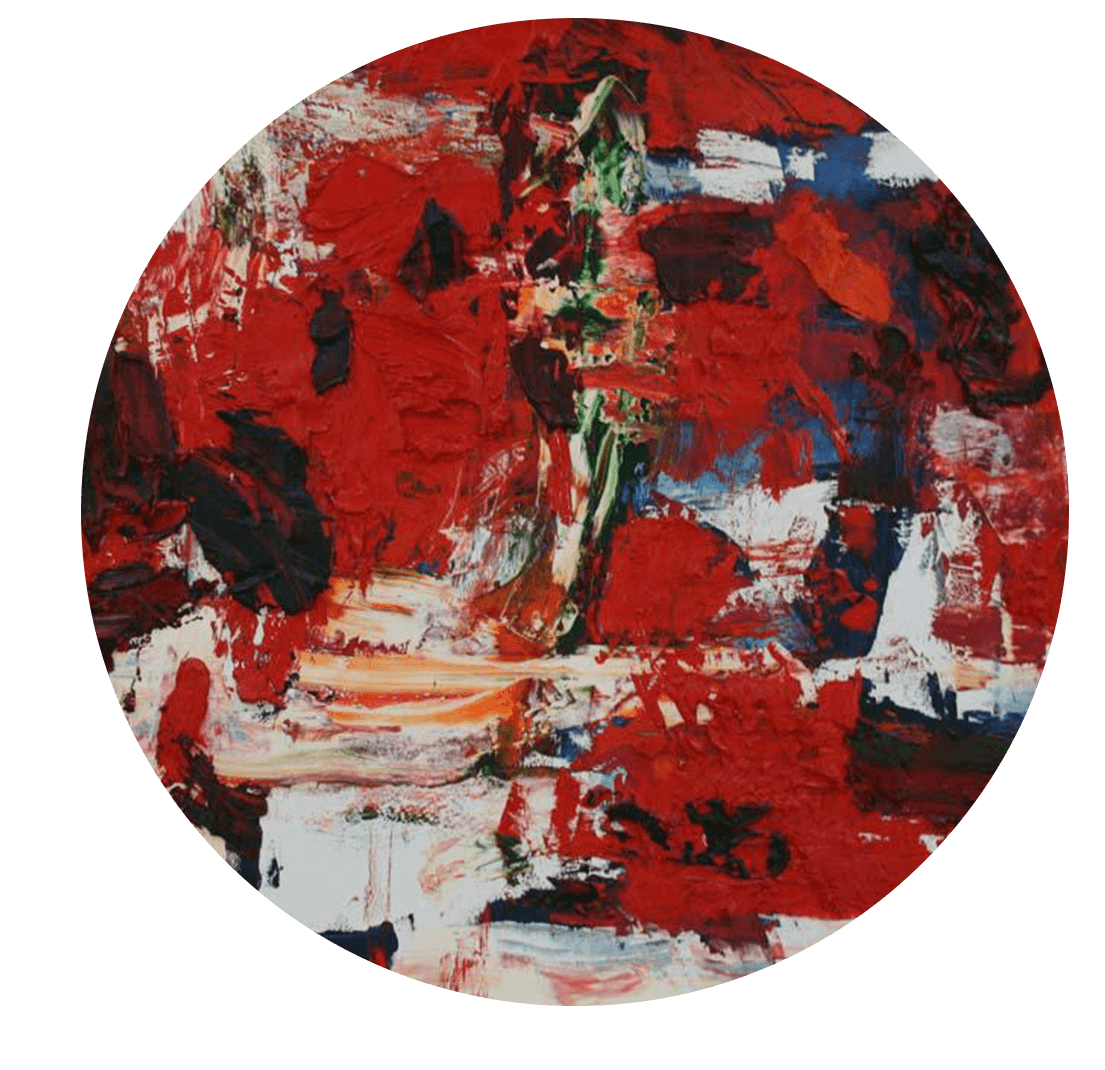
DOB: 1954
POB: Beijing
Education:
1973-77 student of Professor Li Zongjin, Beijing
1986-87 – Scholarship in Kunstlerhaus Bethanien, Berlin
1994 – Lectureship in architecture department of Berlin Technical University
1998 – scholarship in studio of Banff Art Center, Canada
(Lived Berlin 1986 – 1994)
Lives and works: Beijing
No. works in collection: 5
BRIEF BIO:
Zhu Jinshi was born in Beijing in 1954. He began to draw and paint after 1970 when, along with thousands of his urban high-school student peers, he was sent to do factory work. Zhu worked at the Beijing Heavy Industrial Boiler Plant, where he often painted in front of his machine during his rest breaks.
From 1973 to 1977 he worked as an assistant to the modernist artist and teacher Li Zongjin, who had been a professor at the Central Academy of Fine Arts, Beijing, until falling victim to the anti-rightist campaigns of the late 1950s.
Zhu then became associated with the avant-garde ‘Stars’ group in Beijing, and with the Apartment Art movement of the 1980s.
His work was shown in the inaugural 1979 exhibition of the Stars. In 1986 Zhu was awarded a scholarship to study at the Künstlerhaus Bethanien in Berlin and in 1988 received a DAAD Artists-in-Berlin Program scholarship, a grant that provides international artists with funds to cover a year’s study in Berlin.
During the 1990s Zhu’s practice grew to include performance, video and photographic works. When he returned to China in 2000 he began to paint again, developing his characteristic technique of heavy impasto. His work has been exhibited internationally in significant solo and group exhibitions since 1979.
Zhu Jinshi lives and works in Beijing.
ARTWORKS:
#1. Accession
Number: 2007.090
Title: Diary 25.12.2006,
Date: 2006
Broad Medium: Painting
Specific Materials: oil on canvas, mixed media
Dimensions: painting 200 x 250 cm, dimensions variable
Description: Diary 25.12.2006 (2006) was painted after a conference of Chinese artists and critics. Zhu Jinshi left a corner of the canvas blank for a scrawled memo which (roughly translated and summarised) reads: “Resolution of meeting: Art is important, but China is more important!”
EXHIBITION HISTORY
THEN 2019
Diary 25.12.06 includes not just the large canvas but also the artist’s easel, chair, paint palette and even the shovel he used to apply the paint.
The notes scrawled in the corner of the work refer to a conference of artists and critics.
Translated from the poetic form in which they are written, they record the artist’s observations of this event: ‘We talked about art, but our real topic was how, in comparison with the huge issue of the fate of our nation, and the hundreds of years of humiliation our nation had endured, art is just too small and individual, and is not capable of dealing with these weighty issues.’ In other words: ‘Art is important, but China is more important.’
#2. Accession
Number: 2007.091
Title: Judith Said the Painting Must Stop
Date: 2007
Broad Medium: Painting
Specific Materials: oil on canvas
Dimensions: 200 x 250 cm
Description: Red and black abstract painting in heavy impasto. Judith Said the Painting Must Stop (2007) was named when the owner of the White Rabbit Collection walked in on the artist at work in his studio and exclaimed: “That’s enough! You don’t need any more paint!”
EXHIBITION HISTORY NA
Amidst violent slashes of red and black paint in Judith Said the Painting Must Stop (2007) there are small blank areas where the eye can rest.
The painting was named when the collector, Judith Neilson, entered Zhu’s studio while he worked and spontaneously said, ‘That’s enough, you don’t need any more paint!’
As well as references to western Modernism, there are also subtle references to Chinese tradition and Buddhist thought in these works. Critic and scholar Gao Minglu classified Zhu Jinshi and others as Yi Pai artists, arguing that they simultaneously integrated and challenged western theory and contemporary art practice with a uniquely Chinese form of abstraction linked to ancient cultural and philosophical traditions.
Moreover, many of Zhu’s abstract works include patches of unpainted canvas: in a traditional Chinese scroll painting such empty spaces are as important as brush-marks and washes of ink; it is called liu bai, or ‘leave blank’.
In contrast to this practice, though, Zhu Jinshi has likened his empty spaces to ‘smashing through the silence’.
#3. Accession
Number: 2018.009
Title: Spring Festival is Coming,
Date: 2015
Broad Medium: Painting
Specific Materials: oil and acrylic on canvas
Dimensions: 180 x 640 cm (Quadriptych) 180 x 160 cm (each)
Description: 4-panelled abstract work in heavy impasto
EXHIBITION HISTORY
Supernatural, 2018; A Fairytale in Red Times, NGV, 2019
References to the history of Chinese painting are found in Spring Festival is Coming, a quadriptych of vivid colour dominated by a palette of magenta, Naples yellow, green, red and turquoise, in chunks and wedges of oil paint. The colours dance across the surface in a hectic, syncopated rhythm, with areas of untouched canvas around the edges like moments of silence and stillness.
Asked about the significance of the title, Zhu says he began this painting in November and finished it in February, just before Spring Festival and the celebration of the Lunar New Year. Like a scholar painter of the past, he says: ‘In traditional Chinese art, the naming of paintings depends on the artist’s mood; the decision might be inspired by stormy weather, events in the world, sighs or passing thoughts’.
Zhu Jinshi’s abstract canvases, with their vigorous application of swathes of brightly coloured impastoed oil paint, at first appear to be in dramatic contrast with the minimalist and restrained xuan paper installations. Yet there are also subtle references to Chinese tradition and Buddhist thought in these works. Critic and scholar Gao Minglu classified Zhu Jinshi and others as Yi Pai artists, arguing that they simultaneously integrated and challenged western theory and contemporary art practice with a uniquely Chinese form of abstraction linked to ancient cultural and philosophical traditions.
Moreover, many of Zhu’s abstract works include patches of unpainted canvas: in a traditional Chinese scroll painting such empty spaces are as important as brush-marks and washes of ink; it is called liu bai, or ‘leave blank’. In contrast to this practice, though, Zhu Jinshi has likened his empty spaces to ‘smashing through the silence’.
#4. Accession
No: 2018.010
Title: The Ship of Time
Date: 2018
Broad Medium: Installation/Work on Paper
Specific Materials: xuan paper, bamboo, cotton thread
Dimensions: dimensions variable, approximately 300 x 300 x 1500 cm
Description: Cylindrical installation. The Ship of Time xuan paper installation uses approximately 14,000 sheets of rice paper, 1,800 pieces of fine bamboo, and 2,000 cotton threads seven meters long.
EXHIBITION HISTORY
A Fairy Tale in Red Times, NGV, 3 May – 19 October 2019
The Ship of Time required approximately 14,000 sheets of rice paper, 1800 pieces of fine bamboo and 2000 cotton threads each seven metres long.
Zhu’s team travelled to ancient villages in the Yellow Mountains in Anhui Province (so called in honour of the Yellow Emperor, Huang Di, and, according to legend, the place from which he ascended to heaven). There they developed fireproof rice paper and selected bamboo, before spending several months in the studio shaping the paper, baking the bamboo to straighten it, making holes and cutting three-metre sections.
The Ship of Time references Buddhist notions about the passage of life. As with an earlier iteration, entitled Boat (2012), the work recalls how boats have been potent symbols in many cultures. From ancient Egyptian and Greek beliefs about the transport of souls, to early Christian, Byzantine and medieval iconography, the boat often signifies spiritual journeys and redemption.
Inside Zhu Jinshi’s cylindrical ark the light is filtered through the softly translucent paper. The rounded shape of the bamboo structure, suspended from the ceiling and covered in delicate sheets of overlapping, layered rice paper, recalls vistas seen in Chinese gardens through moon windows and corridors. In the traditional Chinese garden, one was never intended to see the landscaping in its entirety, but rather section by section as you wandered across a bridge or looked through the latticed windows of a pavilion by a lake.
So too the journey from one end of The Ship of Time to the other provides distinctly different micro and macro views.
#5. Accession
No. 2007.096
Title: Untitled
Date: Undated
Broad Medium: Painting
Specific Materials: oil on canvas
Dimensions: TBC
Description: small green painting
Exhibition History: NA
Note: Image not Available
MORE COLLECTION HIGHLIGHTS & NEW ACQUISITIONS
Lorem ipsum dolor sit amet, consectetur adipiscing elit. Quisque non augue et ante elementum finibus. Phasellus non cursus nunc. Mauris quam sem, fermentum quis imperdiet sit amet, mollis vitae lorem.

Explore highlights and new acquisitions
SUBSCRIBE
Get access to all our latest news by subscribe here.

